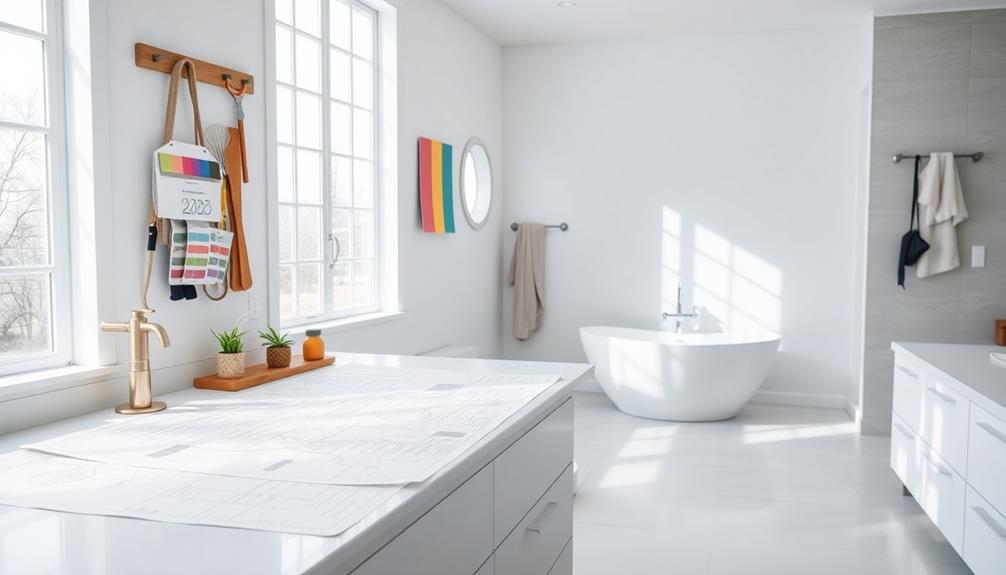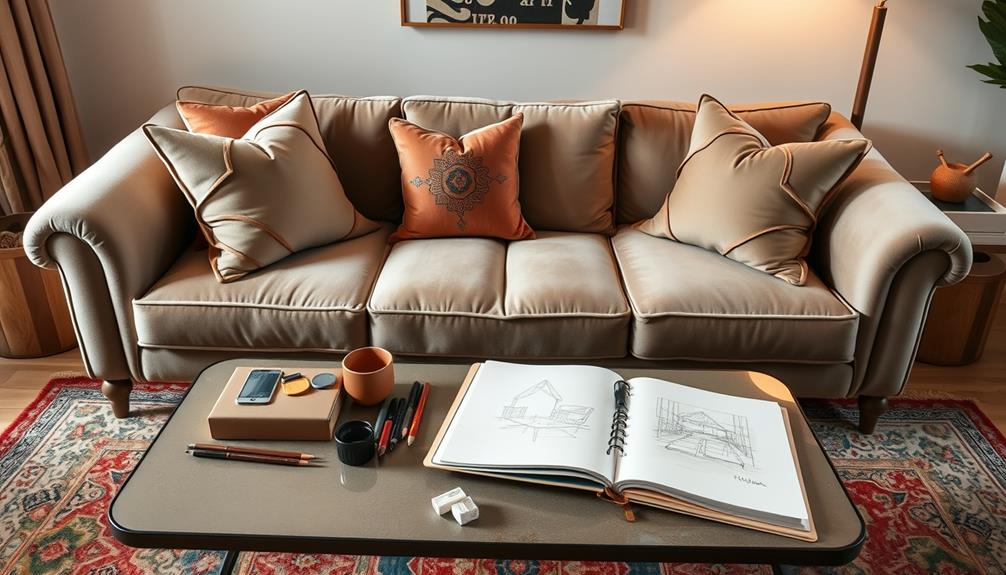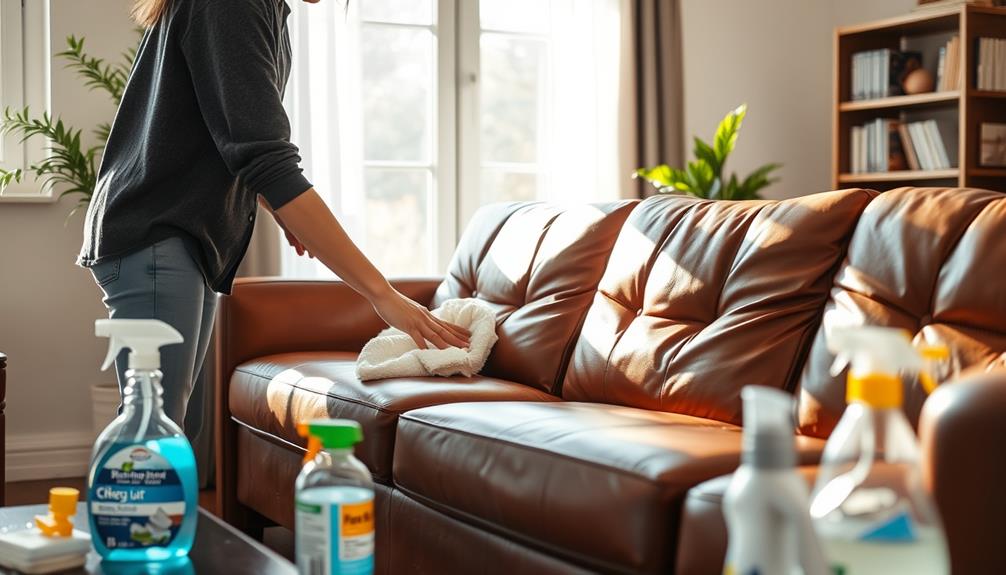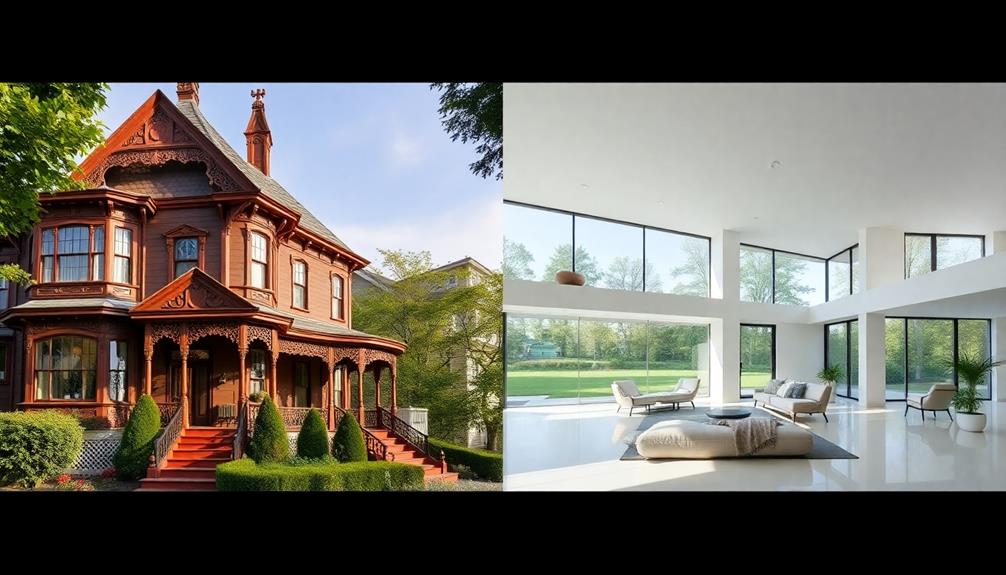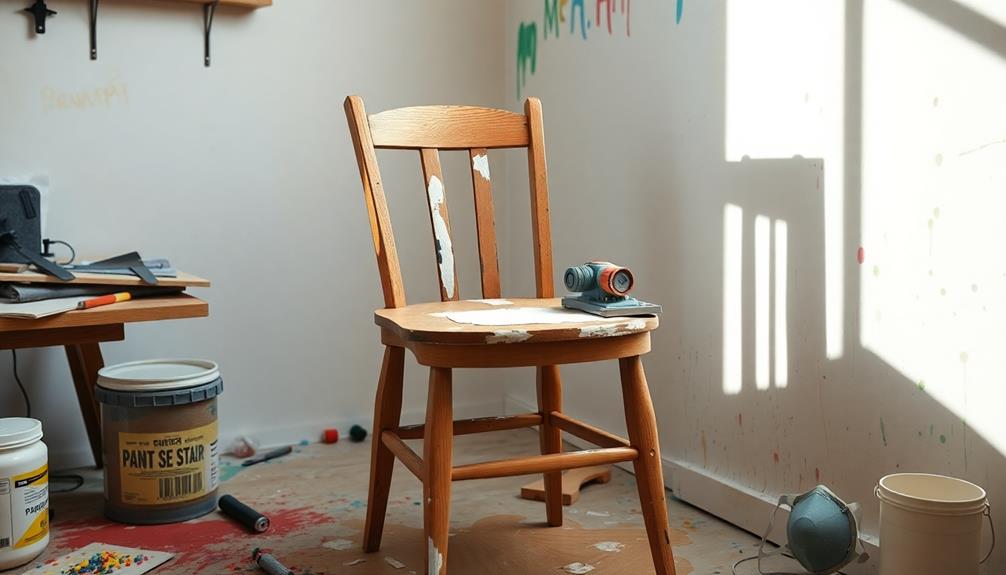Before starting your bathroom remodel, it is essential to first assess your current layout for any inefficiencies and take precise measurements. Seek advice from professionals to understand the potential costs and timelines involved. It is crucial to create a detailed budget that includes a cushion for unexpected expenses. Prepare for demolition by arranging temporary bathroom solutions and prioritizing safety. Ensure that plumbing and electrical needs meet local codes. Carefully select your design and finishes to maintain a cohesive look. Maintain open communication with your contractors throughout the project to ensure it stays on track. Be prepared for potential changes and stay engaged once the project begins. Regularly communicate with your bathroom remodeling contractors to address any concerns or modifications promptly. Keeping a close eye on progress and making timely decisions can help avoid delays. Remember, successful bathroom remodeling relies on open communication.
Key Takeaways
- Assess the current bathroom layout to identify inefficiencies and measure fixed elements for better planning.
- Consult multiple licensed contractors for feasibility assessments and to compare quotes and services.
- Create a detailed budget, including a contingency fund for unexpected expenses, and research material costs.
- Plan for demolition by establishing temporary bathroom solutions and ensuring safety precautions are in place.
- Choose a cohesive design and high-quality finishes while maintaining open communication with contractors throughout the remodel process.
Assess Current Bathroom Layout
When evaluating your bathroom's layout, it's vital to identify any inefficiencies that could affect its functionality and comfort. Start by examining the current space for wasted areas or poor flow. These issues can greatly impact how you use the bathroom daily.
Pay close attention to the placement of fixed elements like plumbing, electrical outlets, and windows, as changing these can lead to costly rerouting or structural modifications. Additionally, consider how your bathroom setup can enhance your daily routine, much like how various brewing methods affect the coffee experience.
Next, take accurate measurements of your existing space, including the dimensions of fixtures and storage areas. This information is important for ensuring that any new designs will fit properly.
You might want to sketch a proposed layout or use design software to visualize potential changes. This step not only helps clarify your vision but also facilitates better discussions with contractors later on.
Lastly, research design inspirations that align with your needs. Focus on accessibility and storage solutions to enhance usability in your remodeled bathroom.
Consult With Professionals
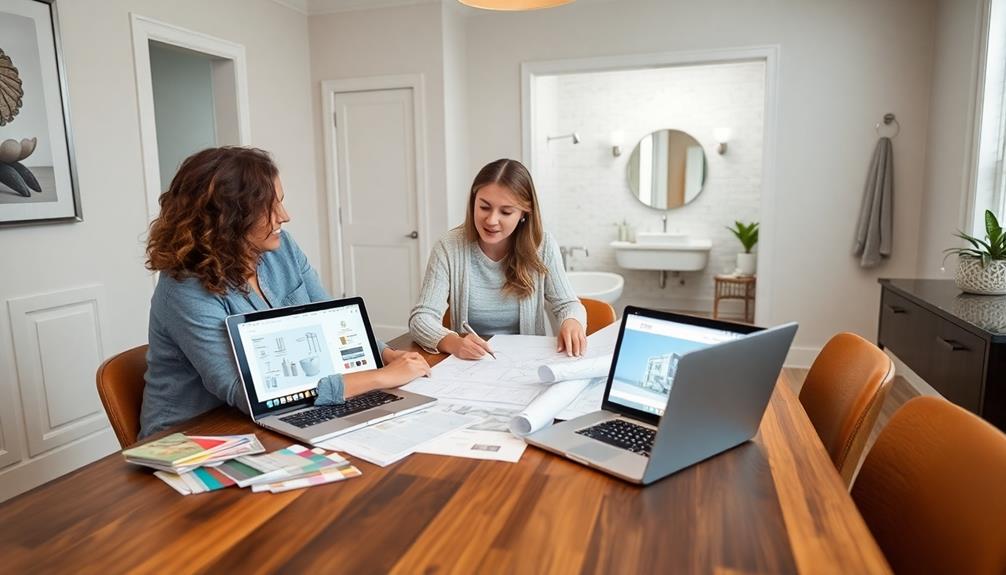
Consulting with professionals early in your bathroom remodel can save you time, money, and headaches down the line.
Start by reaching out to a general contractor to assess the feasibility of any plumbing and layout changes based on your design vision. It's important to discuss project details and desired amenities to guarantee everything aligns with your budget and timeline.
Additionally, acknowledging the importance of home security systems, having a secure environment during and after your remodel can enhance your overall peace of mind, especially if you opt for features like value of home security systems.
Here are some key steps to take into account:
- Consult with multiple contractors to gather quotes and compare pricing and services.
- Verify the licenses, insurance, and credentials of contractors to confirm they're qualified for technical tasks like plumbing and electrical work.
- Discuss the timeline and necessary inspections with your contractor to stay ahead of any potential delays.
- Schedule approvals from town officials based on the contractor's recommendations to keep your project on track.
Create a Budget
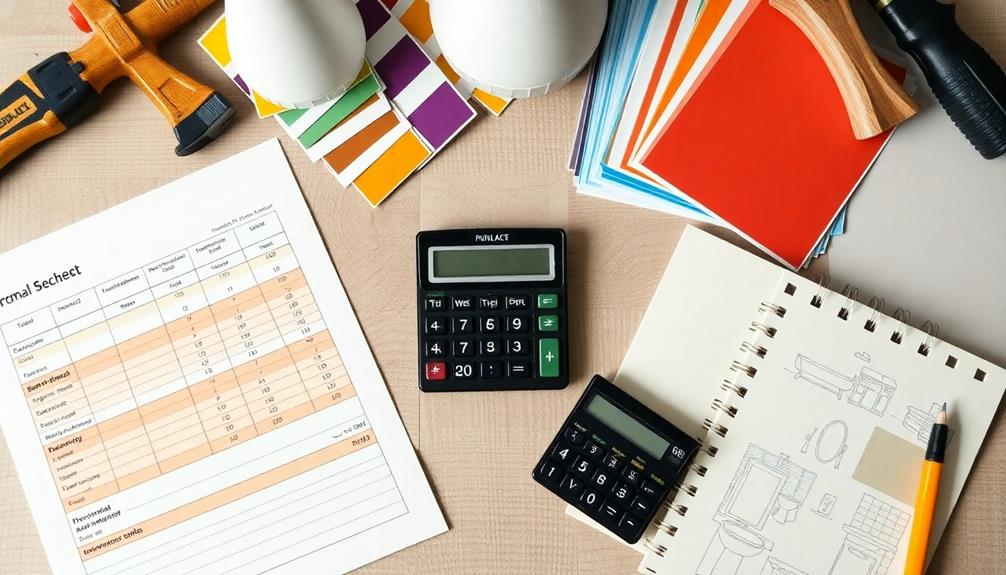
When you create a budget for your bathroom remodel, start by estimating the costs of materials and supplies, which can average around $10,753.
It's also wise to track your income and expenses carefully to guarantee you remain within your financial limits, similar to how you'd manage a personal budget, including budgeting essentials.
Don't forget to plan for unexpected expenses by setting aside an additional 10-20% of your total budget for unforeseen issues.
This way, you can tackle your project confidently, knowing you're prepared for whatever comes your way.
Estimate Material Costs
Estimating material costs is essential for a successful bathroom remodel, as it helps you create a realistic budget.
Begin by calculating the total estimated costs, taking into account materials such as tiles, fixtures, cabinetry, and plumbing supplies. According to HomeAdvisor, average bathroom remodel costs range from $6,127 to $15,383.
It's also important to take into account financial considerations for elderly care if the remodel is aimed at improving accessibility for seniors.
Don't forget to factor in design fees, permit costs, and potential inspection fees, as these can greatly impact your overall budget.
When budgeting, also include labor costs, especially if you hire a general contractor for plumbing and electrical work, which can add thousands to your total expenses.
To keep your budget in check, research and compare prices of materials from local home improvement stores and online retailers.
Here are some key items to contemplate:
- Tiles and flooring
- Bathroom fixtures (sinks, faucets, toilets)
- Cabinets and storage solutions
- Plumbing supplies and materials
Plan for Unexpected Expenses
Planning for unexpected expenses is essential in ensuring your bathroom remodel stays on track and within budget. Start by establishing a detailed budget that includes materials, labor, and a contingency fund for unexpected costs. It's wise to add 10-20% to your overall budget for this purpose.
Research average costs for bathroom remodels in your area, which can range from $6,127 to $15,383, depending on your project's scope. Additionally, consider how economic indicators can influence material prices, which may lead to fluctuations in your budget historical performance trends of gold.
Don't forget to include potential expenses for permits, inspections, and design fees, as these can vary considerably based on local regulations. Be prepared for hidden damages, like plumbing issues or structural problems, which can arise unexpectedly and extend your timeline.
To keep everything transparent, discuss any potential delays or unforeseen expenses with your contractor. Clear communication is vital; it helps avoid financial surprises during the remodel.
Plan for Demolition
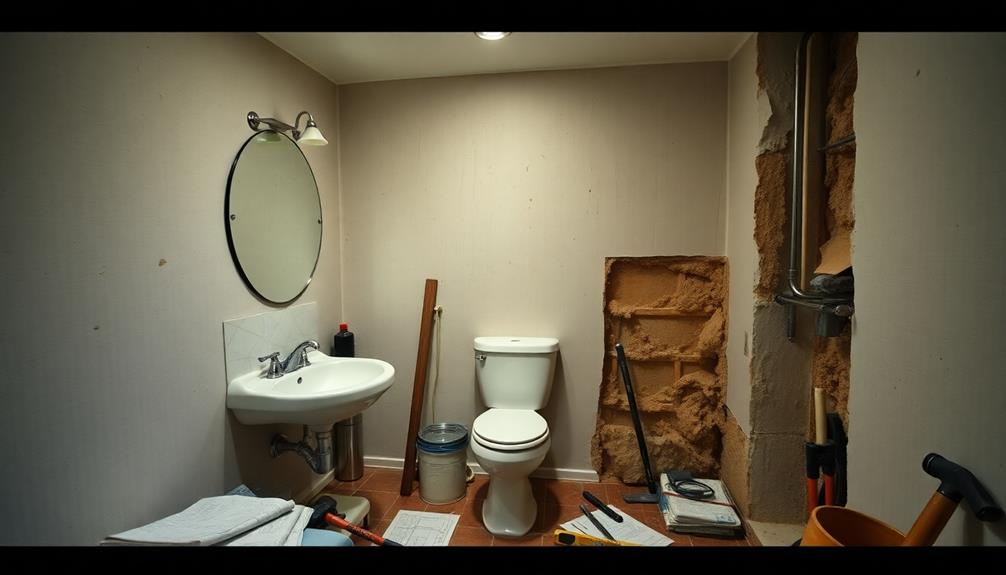
Before you start the demolition, think about temporary bathroom solutions to make the process easier.
Consider creating a makeshift toilet or utilizing a camping shower, as these can help maintain hygiene during the remodel.
You'll also want to take essential safety precautions, like turning off the electricity and water supply, to protect yourself and your home.
Planning ahead will help guarantee a smooth and efficient remodel, similar to how one would organize a bug out bag for unexpected emergencies.
Temporary Bathroom Solutions
Preparing for a bathroom remodel can be an intimidating task, but finding effective temporary bathroom solutions can ease the change. Start by setting up a temporary bathroom in a convenient location, like another room or even a basement if plumbing allows.
Consider installing a portable toilet and a shower unit to maintain comfort during the renovation. Additionally, having a plan for maintaining cleanliness can be vital, much like how wood pellet fireplaces guarantee efficient heating while minimizing mess.
If a temporary bathroom isn't feasible, plan to use nearby friends' or neighbors' facilities. You might also explore gym memberships for access to showers and toilets.
Clear communication with everyone in your household is essential; make sure everyone is aware of the arrangements and agree on schedules to minimize congestion in shared spaces.
To guarantee you're prepared, stock up on essential toiletries and supplies in a convenient location. This will help you maintain hygiene and comfort throughout the process. Consider using caddies for easy transport of your items.
Here are a few ideas to help you with your temporary bathroom solutions:
- Set up a portable toilet
- Use a shower unit
- Coordinate with friends for access
- Keep a caddy of essentials handy
Essential Safety Precautions
Demolition can be a messy and intimidating part of your bathroom remodel, but taking essential safety precautions guarantees a smoother process. First, turn off the electricity at the main breaker box to eliminate electrical hazards while you're working.
Next, shut off the water supply to prevent leaks and potential water damage during the removal of fixtures. It's wise to reflect on the importance of professional cleaning for any surfaces that may need special attention post-demolition.
Clear out all accessories and non-fixed objects from the bathroom. This creates a safe workspace and minimizes your risk of injury. Additionally, identify and mark any load-bearing walls. Improper handling during demolition can compromise your home's structural integrity, so it's crucial to know where these walls are.
To protect yourself during the demolition phase, wear appropriate protective gear, including gloves, goggles, and masks. These items safeguard against debris, dust, and other potential hazards.
If you're unsure about any part of the demolition process, don't hesitate to consult a professional contractor. Their expertise can enhance your safety and help guarantee the project runs smoothly.
Prepare for Plumbing and Electrical
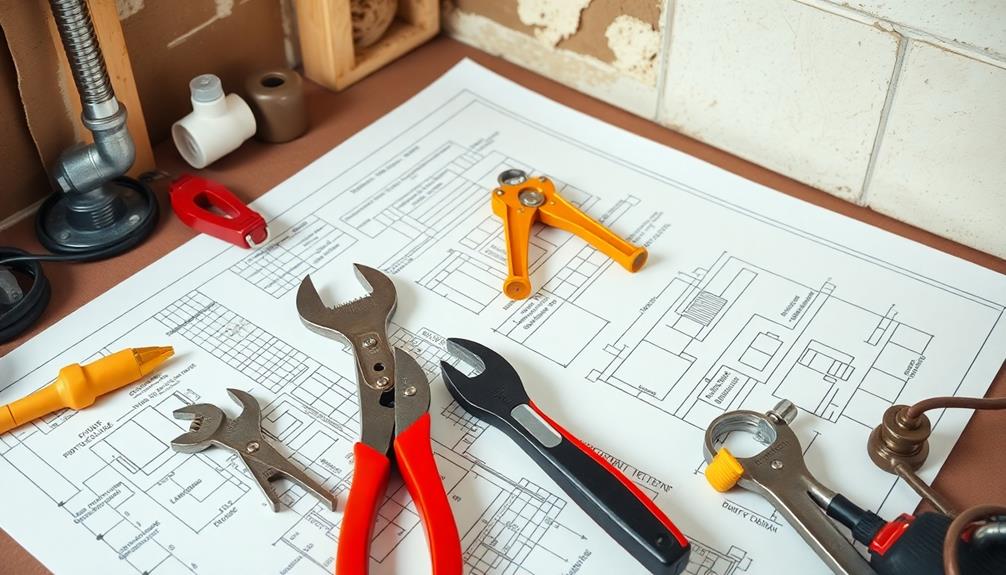
To secure a smooth bathroom remodel, it's vital to first address plumbing and electrical considerations. Start by shutting off the water supply to prevent leaks during plumbing work.
Next, turn off the electricity at the main breaker box to guarantee safety during electrical installations. Additionally, consider the impact of heating systems during your remodel, as selecting the best heat pump can enhance comfort and efficiency in your bathroom space.
During the plumbing rough-in phase, focus on these key tasks:
- Install new shower pans or tubs.
- Replace shower controls while extending water lines for new fixtures.
- Confirm you have GFCI outlets near water sources to comply with safety codes.
- Upgrade to 20-amp circuits for modern appliance demands.
Don't forget about relocating light switches to improve accessibility.
It's important to consult a licensed contractor to ensure all plumbing and electrical installations meet local building codes. Improper work can lead to costly repairs and safety hazards, so it's best to leave the heavy lifting to the professionals.
Choose Design and Finishes
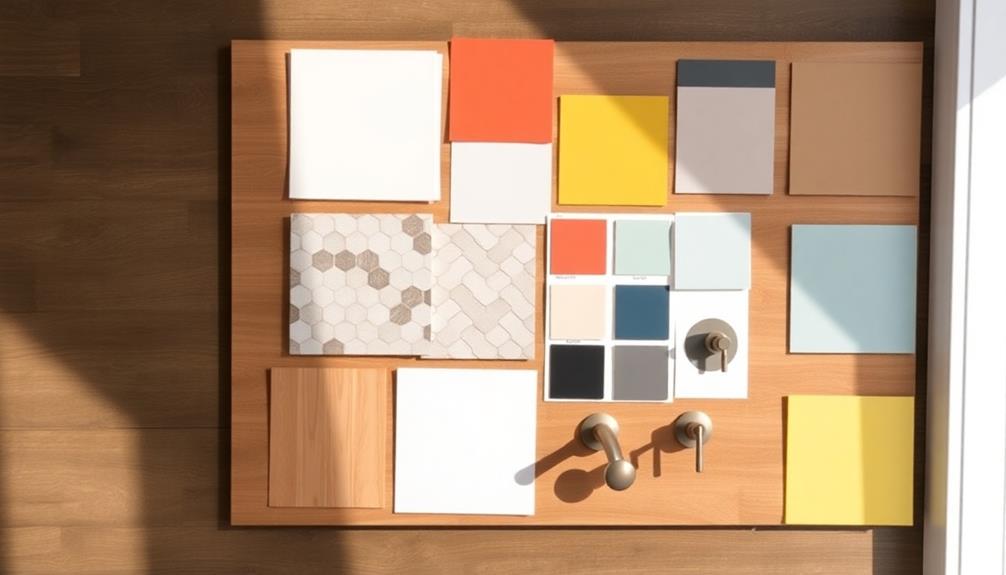
Design and finishes are essential elements in a bathroom remodel that can transform the space into a personal oasis. Start by selecting a cohesive color scheme that complements your home's overall style. Lighter shades can create an airy feel, while darker tones add richness and warmth.
To guarantee your choices resonate with your personal taste, consider keeping a design journal to track your evolving preferences as you explore different styles and finishes exploring personal tastes.
Next, prioritize high-quality materials for your fixtures and finishes. These not only enhance aesthetics but also improve durability, guaranteeing long-term satisfaction.
When it comes to tile work, visit tile showrooms to explore a variety of options. Large format tiles work well for floors, while smaller tiles are ideal for shower areas to accommodate drainage needs effectively.
Don't forget to consult with design experts for guidance on grout colors and trims. This guarantees a polished and cohesive look throughout the space.
Finally, think about functional accessories like shelving, towel bars, and light fixtures. Choose items that align with your design style, as they enhance both utility and visual appeal in your remodeled bathroom.
Communicate With Contractors
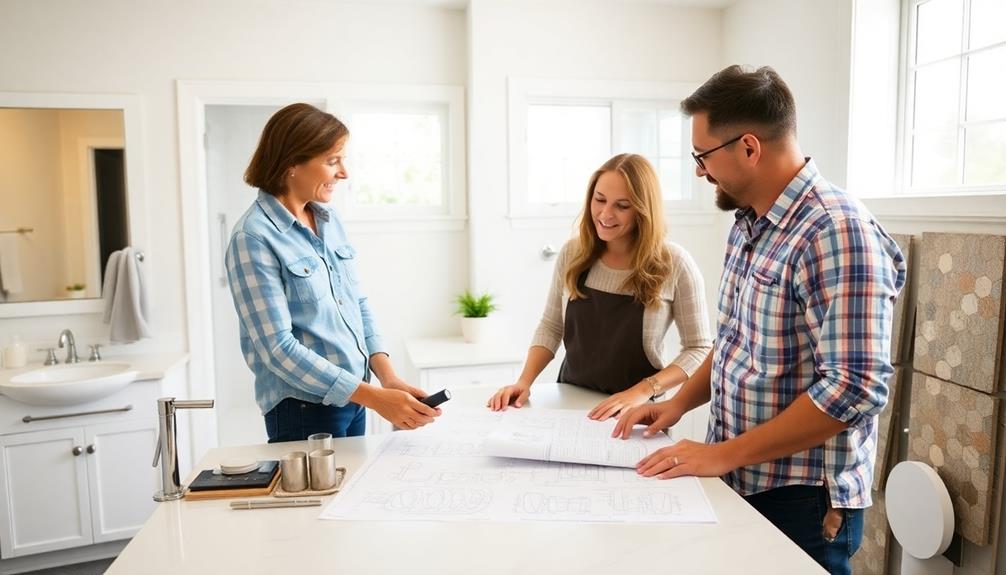
Once you've nailed down your design and finishes, the next step is to effectively communicate with your contractors. Clear communication is essential to guarantee your bathroom remodel goes smoothly and aligns with your vision.
Start by discussing the construction schedule early on. Establish timelines and expectations for each phase of the project to avoid surprises.
Make certain to address the following key points with your contractor:
- Dust control measures: Discuss daily cleanup procedures to minimize disruption during construction.
- Protection for flooring and furniture: Inquire about how they'll safeguard your belongings from tools and materials.
- Staging area for materials: Verify where materials will be stored to keep your living spaces clutter-free.
- Open communication: Maintain consistent dialogue throughout the remodel to promptly tackle any issues or changes.
Set Up Temporary Solutions
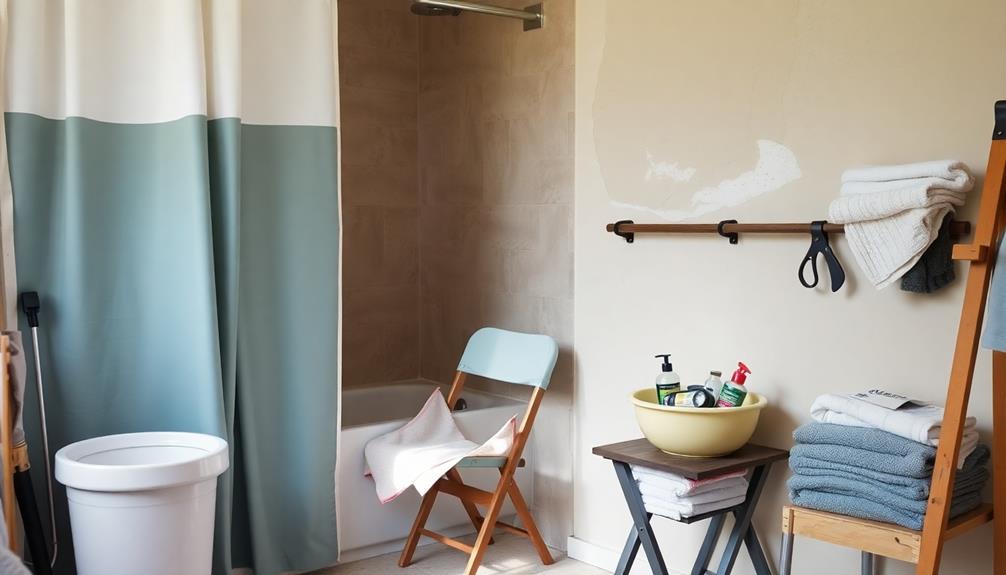
While your bathroom remodel is underway, setting up temporary solutions is vital to guarantee comfort and convenience. You might want to contemplate utilizing a portable toilet to maintain sanitation, especially if the plumbing will be affected.
A temporary bathroom can be set up in a basement or spare room, complete with a rented shower unit to minimize disruption to your daily routine.
Organizing toiletries and essential items in caddies can help you access everything easily in your makeshift bathing space. Designating specific times for bathroom use will also accommodate all family members and reduce congestion in shared areas.
It's essential to communicate openly with your contractors about the timeline for installations. This way, you can plan your temporary solutions effectively and avoid any surprises.
Anticipate Delays and Adjustments
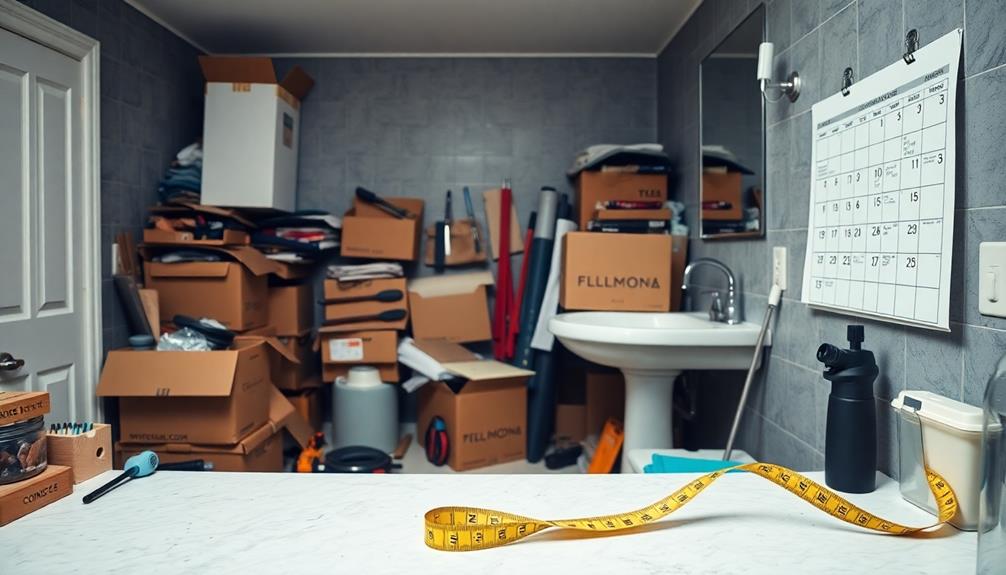
When tackling a bathroom remodel, it's crucial to anticipate delays and adjustments that may arise throughout the process. Hidden plumbing issues often pop up during demolition, potentially causing unexpected setbacks.
If you decide to make design changes mid-project, it can lead to work stoppages and extended timelines, so aim to finalize your decisions early.
To better prepare, consider these key points:
- Material Lead Times: Custom items or specific finishes might take longer to arrive than you expect.
- Flexible Timeline: Build in buffer periods for unforeseen complications to manage expectations.
- Scheduling Conflicts: Avoid scheduling events at home until the remodel is fully completed to prevent inconvenience.
- Communication: Maintain open lines of communication with your contractor to stay updated on any delays.
Frequently Asked Questions
In What Order Should You Renovate a Bathroom?
You should start with planning and budgeting, then move to demolition and preparation. Next, tackle plumbing and electrical work, followed by tiling and installation, and finish with painting and adding personal touches to your bathroom.
How Do You Prepare a Bathroom for Remodeling?
Before diving into your remodel, clear out all items, turn off electricity and water, and cover existing fixtures. It'll save you headaches later. Plan for temporary restroom options to keep things running smoothly.
What Is the Most Expensive Part of a Bathroom Remodel?
The most expensive part of a bathroom remodel usually involves labor costs, especially for plumbing and electrical work. Those can account for 20% to 35% of your overall budget, greatly impacting your renovation expenses.
Which Factors Should Be Considered Before Bathroom Remodeling?
Before starting your bathroom remodel, consider the layout, budget, local codes, lead times for materials, and the need for professional help with plumbing and electrical work. Planning these factors guarantees a smoother renovation process.
Conclusion
As you commence your bathroom remodel journey, remember it's not just about the end result but the transformation along the way. Like a sculptor chiseling away at marble, you're shaping your vision into reality. Keep your plans flexible, communicate openly with your contractors, and embrace the process. With careful preparation and a sprinkle of patience, you'll soon find yourself stepping into a beautiful new space that feels like a refreshing change.
